
For about 13 years, nobody knew where exactly ZUN sourced the images he used for texturing backgrounds, UI elements, and other non-objects in the mainline Touhou Project games for Windows. Fans have regularly speculated that they come from various stock image libraries, seeing as how little to no details are revealed in ZUN's interviews and blog/social network posts, and absolutely no disclosures are made in any of the accompanying documentation (readmes, omakes) that comes with the released games in regards to any forms of licensing or similar.
This changed on the 9th of August 2015, a few days prior to Comiket 88 and Legacy of Lunatic Kingdom (th15)'s release, when a now-deleted anonymous post on Hatelabo::AnonymousDiary made the accusation that Team Shanghai Alice violated the terms of redistribution of a Kyoto dyed paper collage book+CD-ROM pair called "京染紙 The Yuzen Japanese Paper: 100 royalty free JPEG files". No visual comparisons were provided as evidence, only appearing a day later on what was presumably a thread on 2ch (now 5ch). I say presumably because I have not been able to find the thread, only a summary/matome blog archiving parts of the thread that are relevant. It should also be noted that the original Hatelabo post claimed to have inquired BNN (the publisher) and Hasegawa Shojudo (one of the authors) in regards to this, claiming that both parties responded by saying that the use of this material was not and will not be authorized. We do not have any verifiable logs of this exchange, so we can only go by the poster's word.
As for the matome blog, on it we can see attempts at comparing the th15 jewel case artwork with one of the images from the collage, with this one being the best comparison:

Additional research into instances of using these images would be conducted on the... also now-deleted Touhou anti-wiki, which is about as biased as it sounds. Still, evidence is evidence, so here's the rest of the comparison shots that were made:
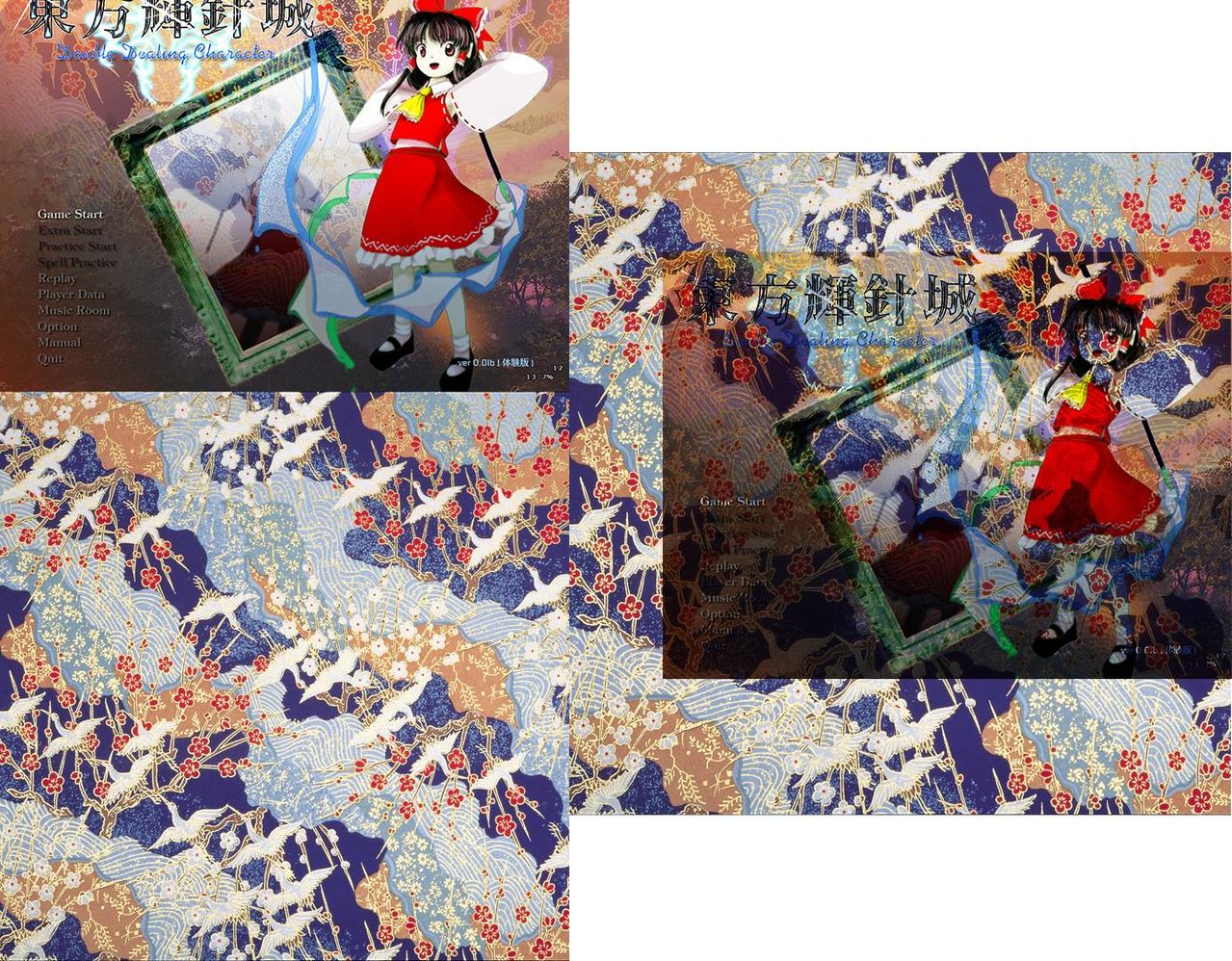
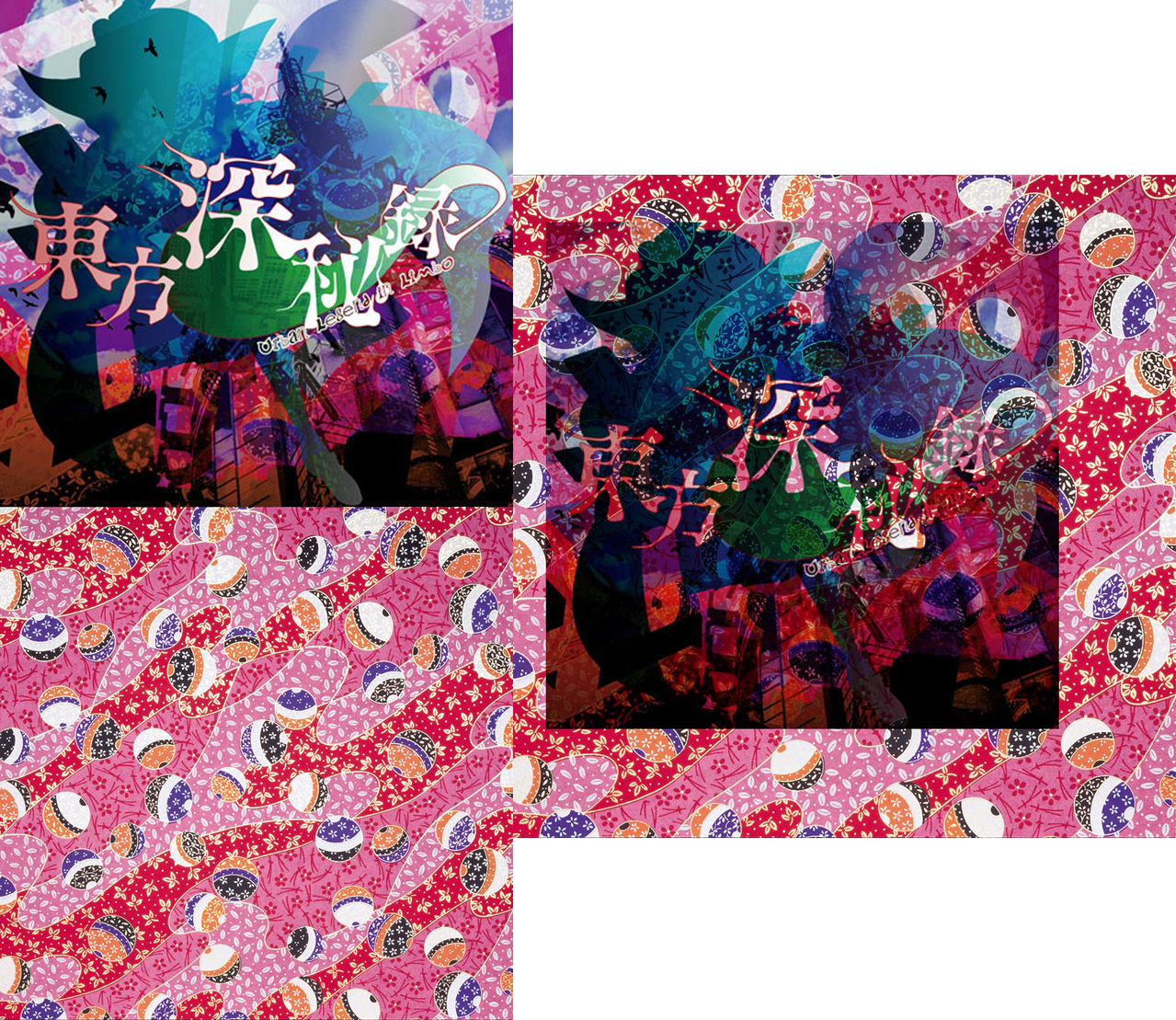
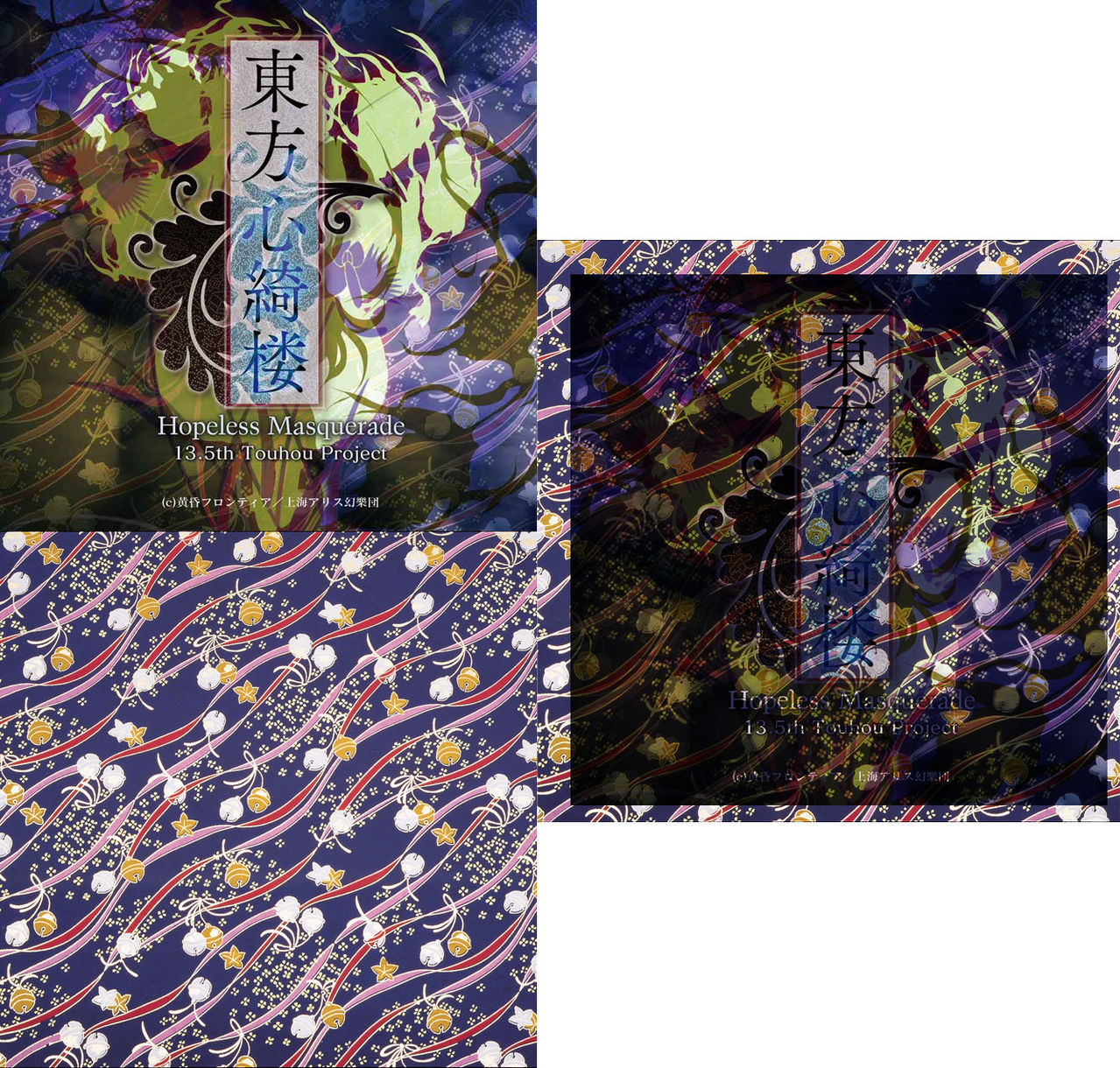
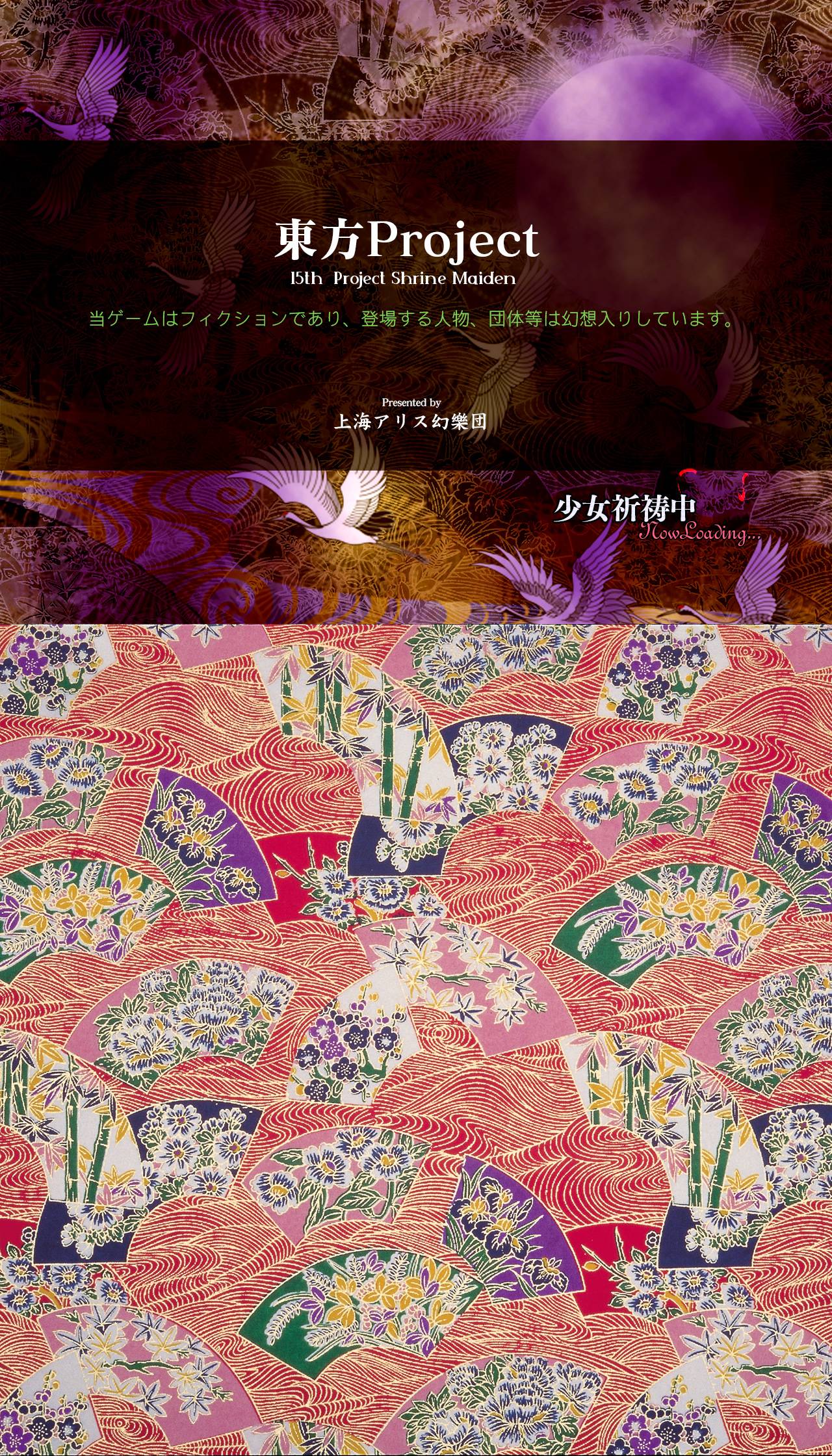
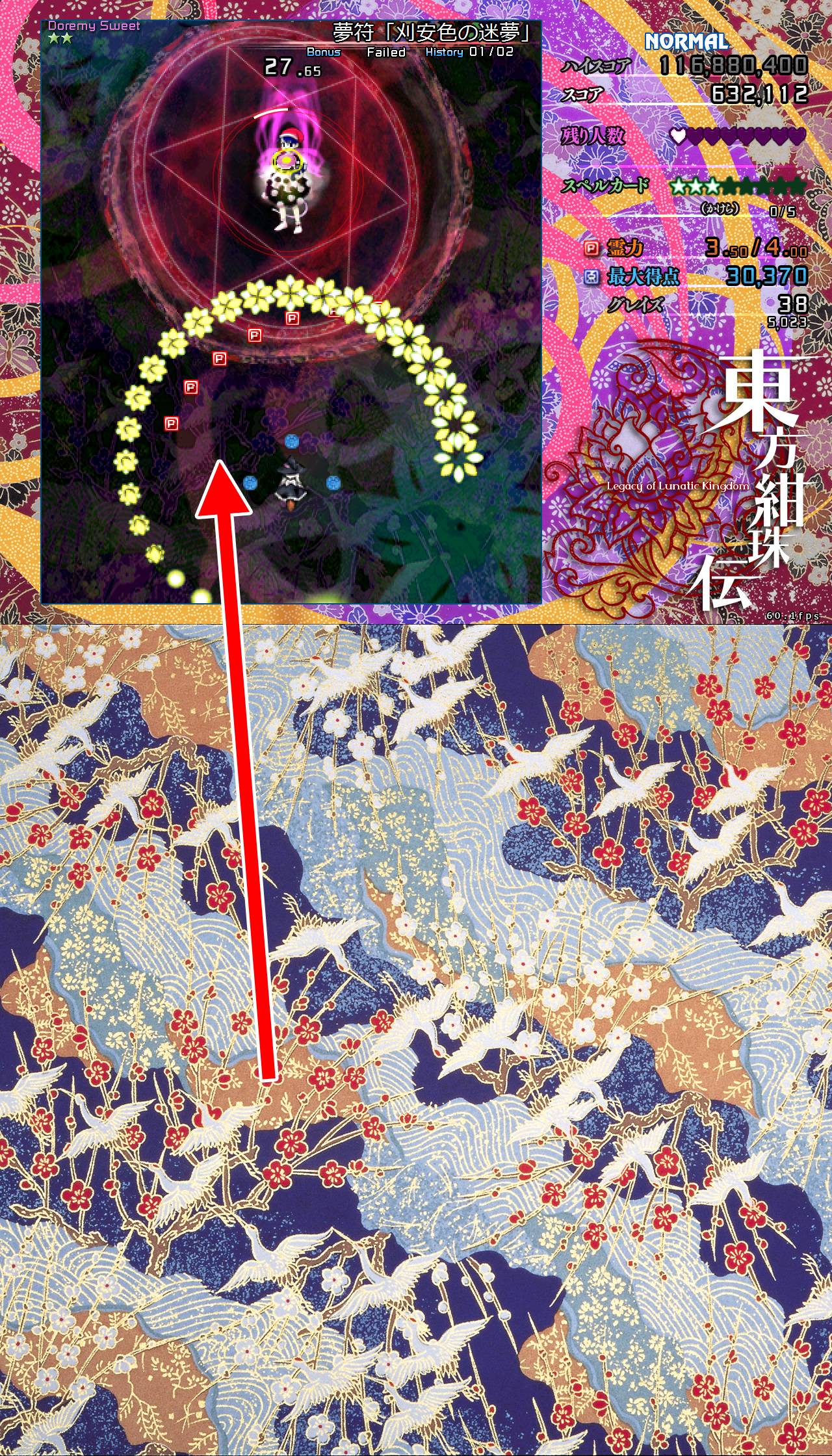
The author of the page would also highlight the clauses that forbid commercial use on the back of the book:
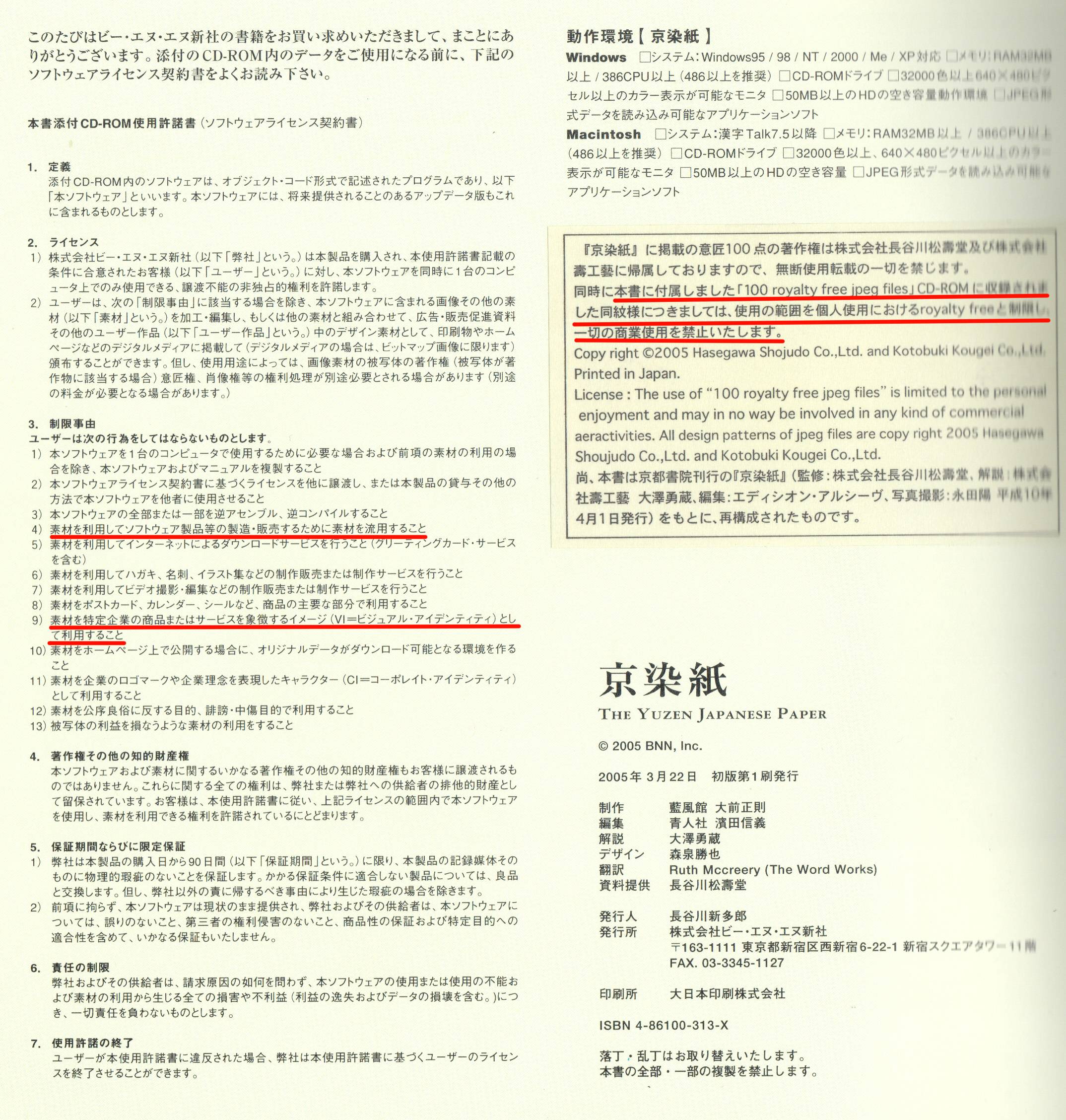
The rest of the page is a partial archive of another thread, this time appearing to be Toho anti-thread part 67/東方Project総合ヲチ&アンチスレ67... again, not the most unbiased of sources of information. In it, there are posters who claim to have spotted the same kind of use and violation in titles from the early 2000s with other collages, but the accompanying evidence has not been archived properly.
When I first saw this not too long ago, it seemed like a pretty clear cut case, and I put up a small post about it on Twitter without digging much deeper into it. However, further observations on Maidens of the Kaleidoscope by user nintendonut888 would put some doubt into this story. Not only has he noted that all of the sources mysteriously got deleted mere days after publication, he also rightfully drew everyone's attention to the very subtitle of the book: "100 royalty free jpeg files". Indeed, anyone would be doing a head scratch if they were told something is royalty free on the front, only for it to claim the exact opposite on the fine print. Other suspicions have risen both then and now that the original poster lied about their inquiry, and that the terms of use on the back of the book were fabricated in some way. MoTK users would also ask additional valid questions, like whether the terms of redistribution for the book and CD differ.
I couldn't in good faith keep what I posted on this situation up with all these doubts in the air, so I redacted the post, put my money where my mouth is and...
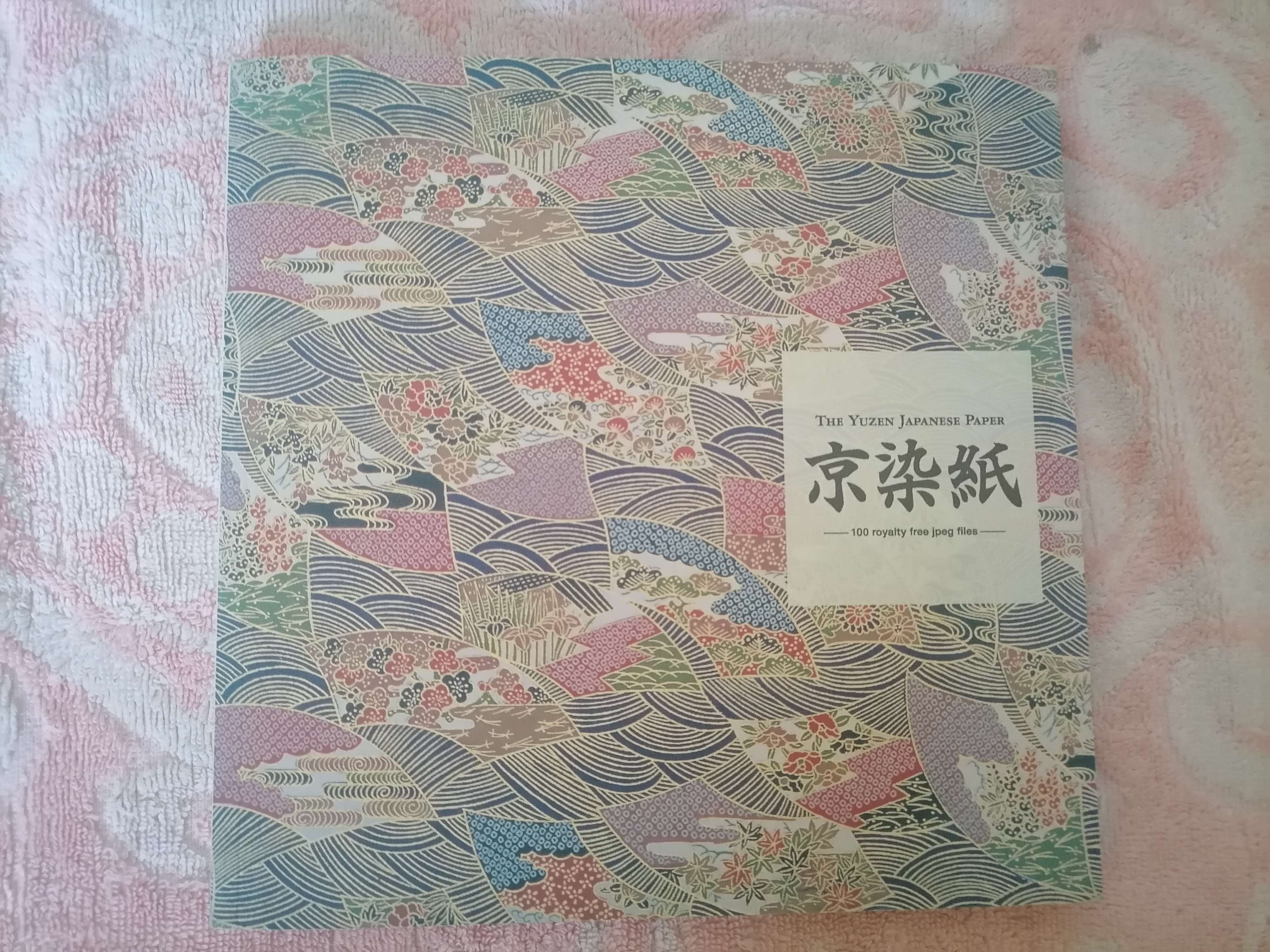
I bought the book!
What I can tell you right off the bat is that none of the clauses in the image above are falsified, but curiously the clauses on the right side are not printed, instead they are slapped on as a sticker. My best guess as to why this happened is that somebody forgot to include the text prior to printing, and they had to patch it up last minute or soon after publishing:
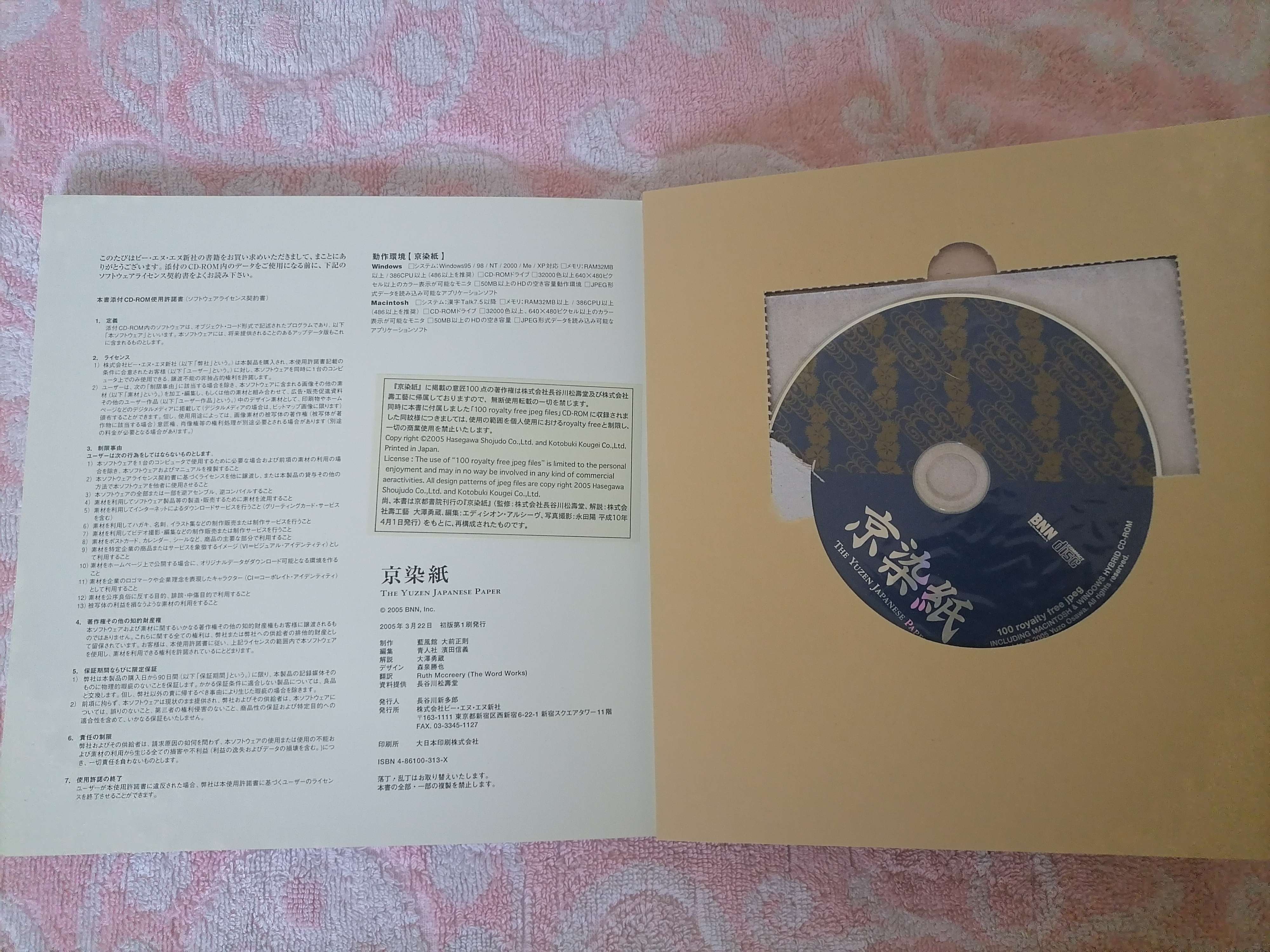
Another point of doubt we can scratch off is the CD containing a different license. There are no additional texts on disc, only the digitized images themselves and a very simple HTML gallery with thumbnails:
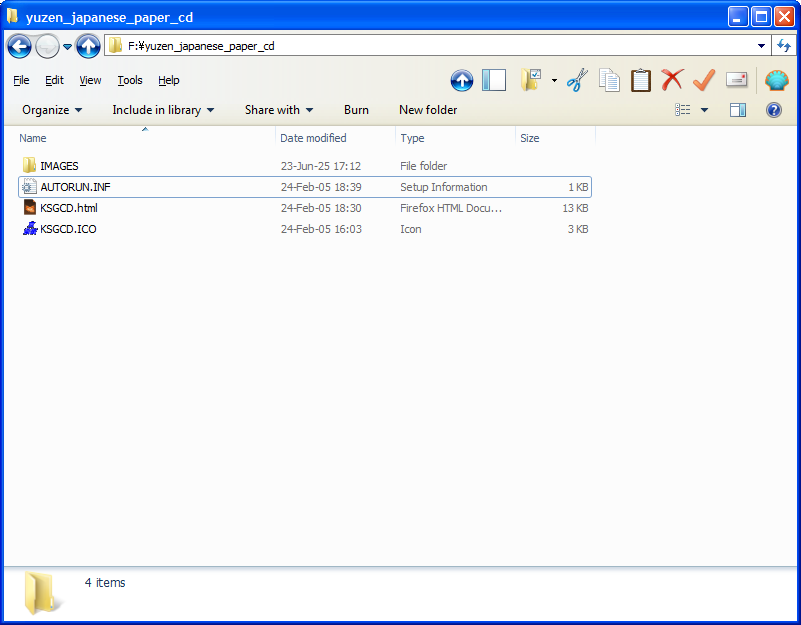
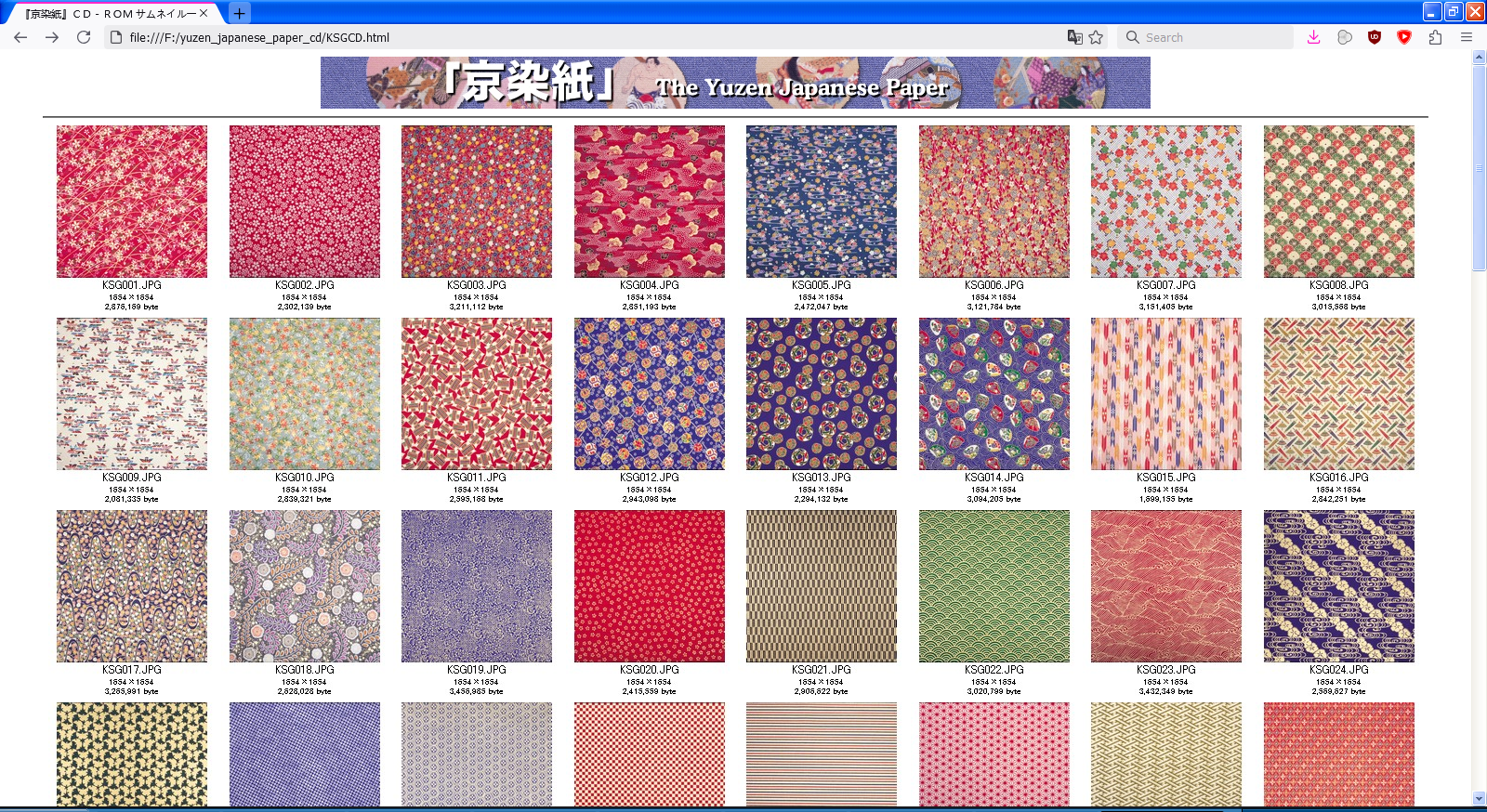
Below are OCRs and machine translations of each of the terms. First is BNNs, then that of Hasegawa Shojudo and Kotobuki Kougei
| OCR | MTL |
|---|---|
このたびはビー・エヌ・エヌ新社の書籍をお買い求めいただきまして、まことにありがとうございます。添付のCD-ROM内のデータをご使用になる前に、下記のソフトウェアライセンス契約書をよくお読み下さい。本書添付 CD-ROM使用許諾書 (ソフトウェアライセンス契約書) |
Thank you very much for purchasing this book from BNN Shinsha. Before using the data on the attached CD-ROM, please read the following software license agreement carefully. |
| OCR | MTL |
|---|---|
『京染紙』に掲載の意匠100点の著作権は株式会社長谷川松壽堂及び株式会社壽工藝に帰属しておりますので、無断使用転載の一切を禁じます。同時に本書に付属しました 「100 royalty free jpeg files」 CD-ROMに収録されました同紋様につきましては、使用の範囲を個人使用におけるroyalty freeと制限し、一切の商業使用を禁止いたします。 |
The copyrights for the 100 designs featured in “Kyozome Paper” belong to Hasegawa Shojudo Co., Ltd. and Kotobuki Kougei Co., Ltd. Unauthorized use or reproduction is strictly prohibited. At the same time, the same patterns included in the “100 royalty-free jpeg files” CD-ROM attached to this book are restricted to royalty-free personal use, and all commercial use is prohibited. |
Obviously, I couldn't make much sense of them on my own without machine translation because I don't know the Japanese language. Even then, I couldn't trust a machine to translate everything reliably. Fortunately, I've got my fair share of contacts over there who could help out.
So far, the most constructive response I got was from Rei8bit, who clarified to me that the left-side clauses are standard across most BNN publications, while the right-side sticker is from the author companies Hasegawa Shojudo and Kotobuki Kougei, who outline their terms specifically in regards to this book. His interpretation is that BNN's terms more or less focus on restricting redistribution of exact copies of their published material, giving some leeway for distribution of modifications under specific circumstances, but since the terms of the authors hold equal ground, their restrictions on any form of commercial use trump BNN's. Even if that wasn't the case, BNN's terms specify that using the materials to manufacture or sell software products or other items (clause 3.4) and using the materials as images that symbolize the products or services of a specific company (clause 3.9) is explicitly restricted. The presence of these images on the covers of several games up to and including th15 violate both of these terms.
Finally, I also sent inquiries to both BNN and Hasegawa Shojudo in regards to commercial use of the materials in the book, asking them to clarify both sets of clauses, as well as to explain whether any private licensing agreements were made with Team Shanghai Alice, and if so whether it's possible for someone like myself to obtain one. At the time of writing, I have not received a reply from either party.
Shortly after I sent my inquiries, my second contact proofread an earlier version of this page. His view of the terms mostly lines up with Rei's, with the addition that he believes BNN's clause 3.4 and the latter parties' personal uses only clause are undeniably being violated because Touhou Project games are commercial products. He also sent an inquiry towards Hasegawa Shojudo, written in a more native manner, and he too did not get a response.
Multiple weeks have passed since the second inquiry, and I couldn't delay the release of this post any longer, hence why it's being published without any official responses. We will try and contact Hasegawa Shojudo by phone when possible, and update the page with their response if they ever provide one.
Unfortunately, this leaves the investigation without a definitive conclusion. While there's grounds to assume that the redistribution terms have been unquestionably violated, one can equally assume that there's possibly been a private negotiation that gave Team Shanghai Alice the rights to use the images in question. If the latter is the case though, that it something I believe Team Shanghai Alice should've disclosed within all of their games in some written form so as to not mislead their customers.